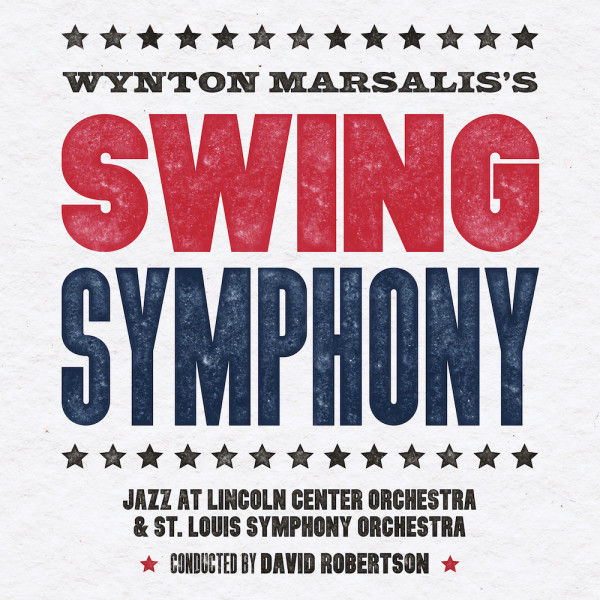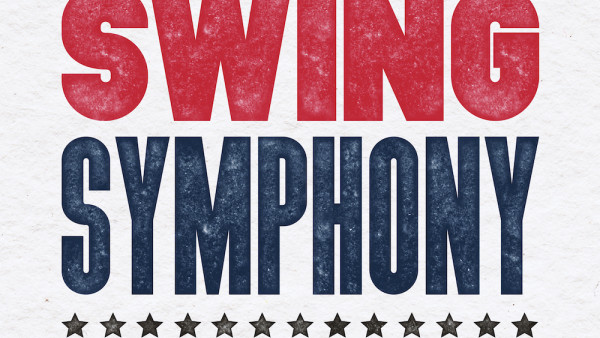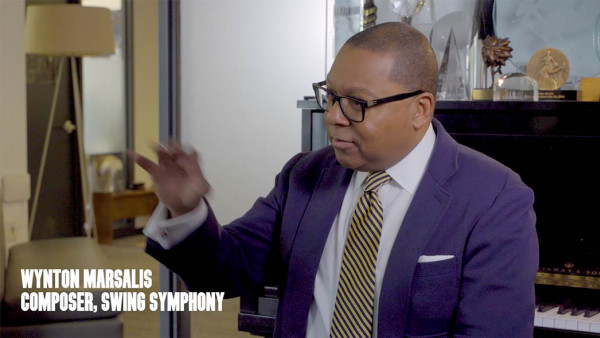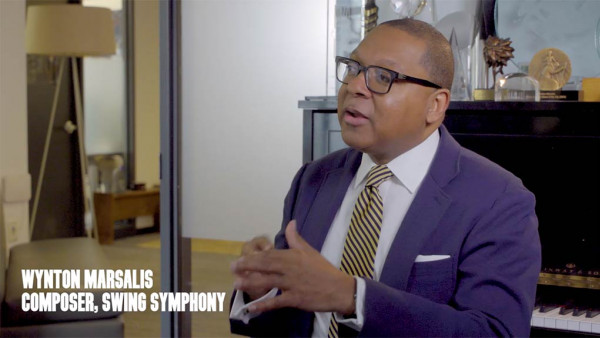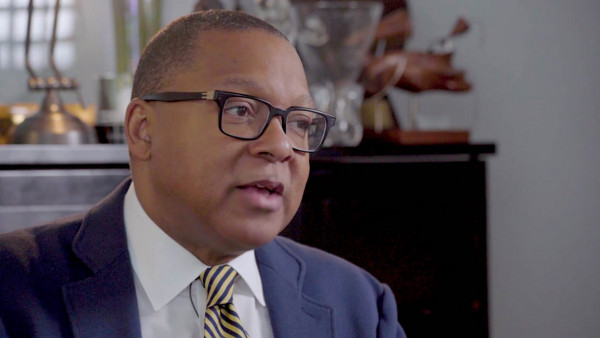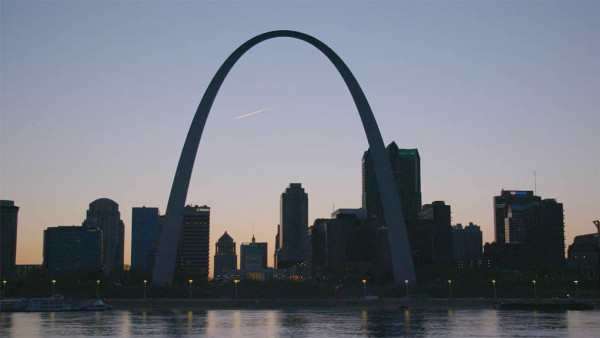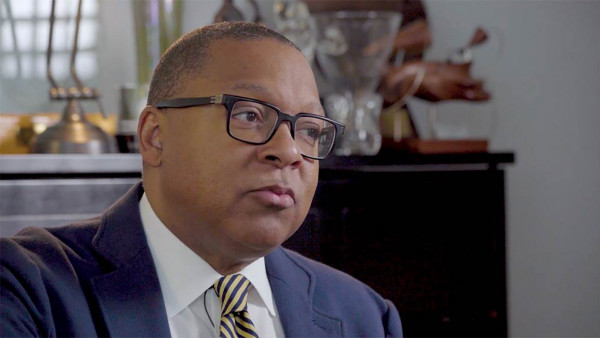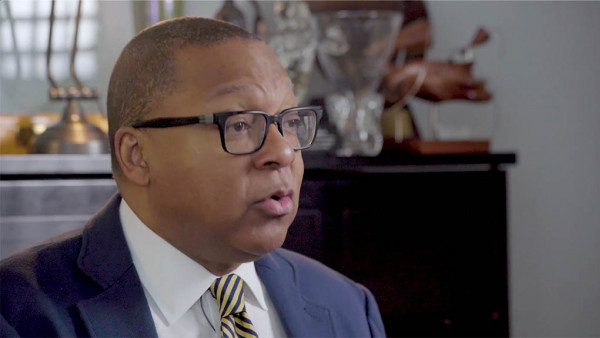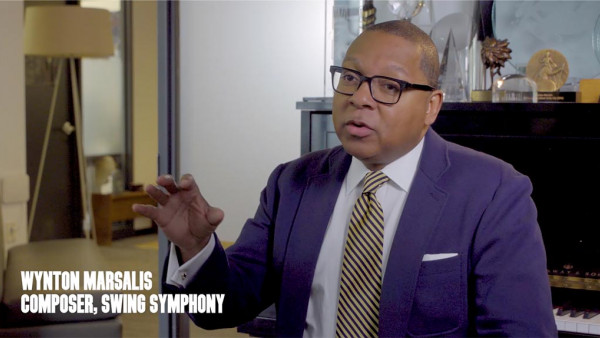‘Swing Symphony’ recording features SLSO, Wynton Marsalis, Jazz at Lincoln Center Orchestra
In May 2018, David Robertson ended his 13-season run as music director of the St. Louis Symphony Orchestra with a pair of jazz-filled performances. The featured work was the “Swing Symphony” by virtuoso trumpeter/bandleader/composer Wynton Marsalis. The Jazz at Lincoln Center Orchestra took the stage with the SLSO.
Also new from Robertson and the SLSO, on Canary Classics: Mozart’s Piano Concertos No. 17 in G major and 24 in C minor, with pianist Orli Shaham. Shaham and Robertson met in the green room at Powell Symphony Hall when they were making their SLSO debuts in 1999. They were married almost four years later and have performed together here ever since.
The “Swing Symphony” recording was a commission by a consortium of orchestras, including the New York Philharmonic and the London Philharmonic. Robertson says it’s a tribute to the generosity of various St. Louis families, including Dave and Thelma Steward.
“Swing Symphony” is available for download on major platforms.
Marsalis says the piece started as conversations between him and Simon Rattle. It’s changed since Robertson, Marsalis, the jazz band and the SLSO first performed it in 2012; then it was six movements, and now it’s seven.
“Little things always change, like the balance,” particularly with orchestras, Marsalis said by telephone from London. “Like these big pieces, if you’re not playing in a configuration, or dealing with that configuration all the time, the weights and balances are very hard to just figure out.”
Marsalis has always had a strong presence in both the jazz and classical worlds. The New Orleans native, a son of jazz pianist Ellis Marsalis Jr., studied the former with his father and the latter at school. In 1983, at age 22, he won Grammy Awards in both jazz and classical music.
The “Swing Symphony,” he points out, is more than just jazz.
“It’s jazz, but it’s all those intersections” between the two, he says. “I consider my whole career, all the playing, to be one of those intersection points.”
Marsalis played in symphony orchestras, starting with the New Orleans Philharmonic when he was in high school.
“There are many intersection points, even in a piece like ‘Sleigh Ride.’ That’s a piece that’s written for symphonic orchestra in concert, but if you’re at drums then it’s like a jazz band. There are many points of intersection that are very natural. I try to find those points so I’m not forced to invent a relationship that doesn’t exist.”
There were no post-concert touch-up sessions for “Swing Symphony,” Marsalis says. “I listened to everything, inch by inch. I went through all the performances and picked the best (movements) because I want the recording to be the very best we can play. It’s a long piece, and everybody was spread across the stage.”
The members of the SLSO played a big part in the edits. They had a listening station, “and they sent back 40 or 50 corrections,” Marsalis says. “It’s a long piece, but they’d note two-bar phrases where something wasn’t right. The level of detail of their comments was astonishing; as an orchestra, they were that serious about it. They took the recording that seriously, and their participation in it was so positive.”
In the recording, Robertson says, the SLSO’s players both stood out and fused with the jazz band. “There are moments when you think, ‘Is that (JLC trombone) Vincent Gardner? No, it’s Tim Myers! That’s (SLSO associate principal) Tom Drake! That’s (JLC clarinet) Sherman Irby; no, it’s got (SLSO principal clarinet) Scott Andrews, and their quality on that is incredible.’ That quality, a blending of the two groups, rarely happens when you get a jazz band and a symphony orchestra on the same stage.
“My favorite part, though, is a couple of quiet moments where you can totally hear Powell Hall. That’s really great to have.”
by Sarah Bryan Miller
Source: St. Louis Post-Dispatch

